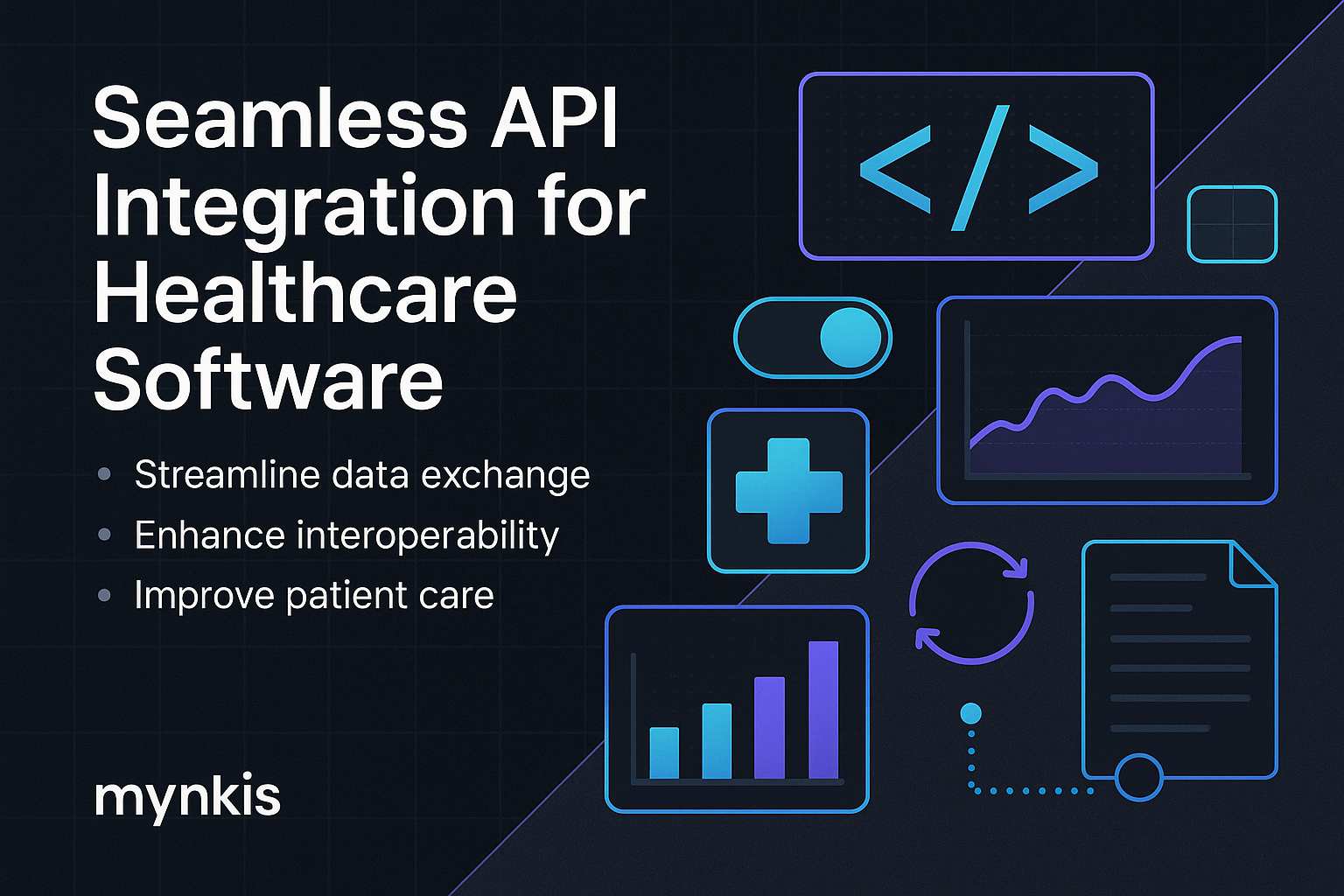Schedule a Demo
In healthcare, managing data efficiently and ensuring seamless interactions across various platforms has never been more crucial. As a software developer, I've witnessed firsthand how third-party APIs can revolutionize how clinics and hospitals manage patient information and portal functionalities.
Integrating third-party APIs into healthcare software isn't just about adding new features; it's about transforming your operations. APIs can provide real-time data exchanges, allowing for instant updates to patient records from multiple sources, ensuring that healthcare professionals have the most current information at their fingertips.
Consider the case of a busy clinic trying to keep track of lab results from various hospitals. With a well-integrated API, these results can automatically populate patient charts, saving time and reducing errors. As I've experienced in my work, this type of integration leads to smoother workflows and happier staff who can focus more on patient care rather than administrative tasks.
The key to successful API integration in healthcare lies in choosing APIs that are compliant with regulations like HIPAA. It's essential to partner with API providers who prioritize data security and privacy. I recommend evaluating APIs based on their security protocols, ease of integration, and how well they align with your specific operational needs.
In my development projects, I often advise healthcare clients to look into APIs that offer robust support and documentation. This not only makes integration smoother but also ensures that your team can manage the API effectively over time. Exploring APIs from reputable companies known for their healthcare focus, like athenahealth or Cerner, can be a strong starting point.
When embarking on API integration, start by mapping out your existing workflows. Understand where the API will fit in and how it will improve your processes. For example, integrating a payment processing API could streamline billing, but only if it integrates seamlessly with your patient management system.
It's also crucial to conduct thorough testing. I've seen too many instances where an API looked great on paper but caused issues in real-world application due to insufficient testing. Develop a comprehensive testing plan that covers all possible scenarios, ensuring that the API behaves as expected and securely handles sensitive patient data.
Another practice I emphasize is ongoing monitoring and maintenance. APIs are not set-and-forget tools; they need regular updates and monitoring to keep them functioning optimally. Establish a routine for checking API performance and staying updated on any changes or new releases from the provider.
One of the most common challenges with API integration is data compatibility. Ensuring that the data structures of different systems align can be a headache. In my experience, using a middleware solution can help bridge these gaps, allowing data from different APIs to be converted and standardized before integration.
Additionally, dealing with API downtime can disrupt operations. To mitigate this, I recommend setting up failover systems and understanding the service level agreements of your API providers. It's also important to have a plan B, perhaps a manual process, to handle services during any downtime.
Security is another area where challenges often arise. To protect patient data, implement strong authentication mechanisms and regular security audits. I've found that working closely with your IT security team can help ensure that all possible vulnerabilities are addressed.
Once these challenges are addressed, the benefits of API integration become clear. From improved patient care through faster access to critical data, to streamlined operations that reduce administrative burden, the impact can be profound. In clinics where I've helped integrate APIs, we've seen a significant reduction in time spent on data entry and errors, leading to more time for patient interactions and better overall care.
Moreover, scalability becomes much easier with the right APIs. As your organization grows or as healthcare requirements evolve, APIs allow for quick adaptations without the need to overhaul your entire system. This flexibility is essential for staying competitive in the ever-evolving healthcare landscape.
Ultimately, the integration of third-party APIs into healthcare software opens up a world of possibilities. By choosing the right APIs, following best practices, and overcoming common challenges, clinics and hospitals can enhance their operations and improve patient outcomes in ways that were once unimaginable.
